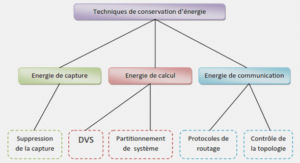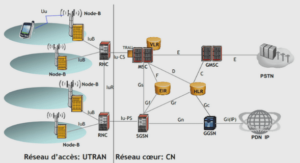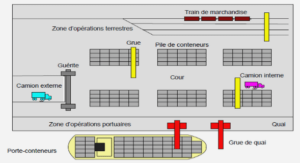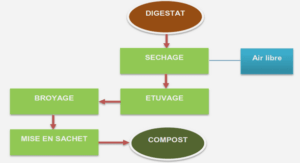MODELLING BOREAL MIXEDWOOD STAND DEVELOPMENT AFTER PARTIAL HARVESTING TREATMENTS IN EASTERN CANADA
Over the last quarter century, ecosystem-based forest management (or forest ecosystem management- FEM) has emerged as a dominant management model for public forests in Canada ~ and elsewhere – and as a result, has been incorporated into forest legislation and regulations of several provinces (Perera et al., 2007; Gauthier et al., 2009). This approach ostensibly aims to ensure forest resilience and productivity by maintaining natural ecosystem processes and biodiversity (Grumbine, 1994). Forest ecosystem management therefore considers forests holistically and at broad spatial and temporal scales, and while many of the « ecosystem issues » surrounding forest management are focussed on cumulative, forest-level impacts of management, a good understanding of stand-level development and dynamics is also very important. This is arguably most relevant in the case of forests that are managed under extensive management regimes or are still largely modulated by natural disturbances (Christensen et al., 1996; Bergeron and Harvey, 1997; Franklin et al., 2002).
Boreal mixedwood forests are generally considered among the most productive forests in the boreal zone (Chen and Popadiouk, 2002), and an important source of timber for the forest industry (Penner, 2008). Although mixed species stands may occur through a broad range of age classes, boreal mixedwoods represent a transitional, post-fire stand development phase between break-up of an initial cohort of intolerant hardwoods and dominance by late-successional species (Bergeron, 2000; Chen and Popadiouk, 2002). Moreover, mixedwood stands may also develop as a result of natural partial disturbances such as insect outbreaks or diseases (Ghent, 1958; Bergeron and Leduc, 1998), following harvesting or through succession as a result of different regeneration and mortality dynamics of component species (MacDonald, 1995; Penner, 2008). This said, our understanding of the spatial and temporal variations of second growth mixedwood stands following these disturbances in the southem clay belt region ofQuebec and Ontario is still fragmentary (D’Aoust et al., 2004; Brassard and Chen, 2006).
Management of mixedwood forests owes much of its complexity to the numerous variants of stand structure and composition, autoecological differences (shade tolerance, reproductive capacity, growth rates, maximum size, longevity and parti cul ar vulnerabilities) among species, site characteristics and diverse disturbances (MacDonald, 1995; Lieffers et al., 1996b ). Additionally, the emerging paradigm of managing forests for complexity (Puettmann et al., 2009) would suggest that the heterogeneity of mixedwood stand composition, structure and dynamics presents a veritable palette of management options to silviculturists working in these forests. In this respect, the development of silvicultural approaches adapted to mixedwood stands should include an improved organization of knowledge of the diversity of existing stand conditions and oftheir underlying forest dynamics.
Theoretical framework
Canadian boreal mixedwood forest region
Canada possesses 10% of global forested landmass, a figure which underscores the importance of this forest for biogeochemical cycling and biodiversity on a planetary scale (Chen and Popadiouk, 2002; Thompson and Pitt, 2003). Of the 417.6 million hectares of Canadian forest, 18% are dominated by boreal mixedwoods (Thompson and Pitt, 2003; Brassard and Chen, 2006), the most productive and diverse forest ecosystems in the North American boreal forest (De Grandpré and Bergeron, 1997; Chen and Popadiouk, 2002). Among three categories or zones (Figure 1.1) of the Canadian boreal forest, the southern-most « Thermoboreal’ zone (Baldwin et al., 2012) incorporates what has traditionally been referred to the eastern and western boreal mixedwoods regions or the « boreal shield » and the « boreal plain », respectively (Bergeron et al., 2014). Forest composition (relative abundance of hardwoods and conifers) of boreal mixedwoods varies largely throughout its distribution range. This variability of forest composition is due to a range of climatic and biophysical conditions such as natural disturbance regimes, site and soil factors, as well as management histories (Burton et al., 2003, 2010).
Structure and composition of boreal mixedwood stands
Boreal mixedwoods generally present greater resource availability and higher biodiversity than single species stands (Bergeron, 2000). As well, mixedwoods are purported to be more resilient to partial stand disturbances ( e.g., insect out breaks, blowdown) than single-species stands in the boreal region (De Grandpré and Bergeron, 1997; Chen and Popadiouk, 2002) and potentially more resistant to the invasion of pioneer species (Bergeron and Harvey, 1997). On productive mesic sites, mixedwood stands are characterized by a mixed composition of boreal conifers and shade-intolerant deciduous species. Among these, trembling aspen, white birch (Betula papyrifera March), and jack pine (Pinus banksiana Lamb.) are common early successional species. In the eastern thermoboreal zone, balsam fir (Abies balsamea (L.) Mill.) is the dominant species in late-successional forests on mesic sites, and is associated with white spruce (Picea glauca [Moench] Voss), black spruce (P. mariana [Mill.] B.S.P.), and eastern white cedar (Thuja occidentalis L.) (Bergeron, 2000).
Ecosystem-based forest management
Definitions of ecosystem-based forest management may vary slightly, but one common element is the incorporation of a thorough knowledge of natural forests and their dynamics as a reference and guide to forest management planning and interventions (Gmmbine, 1994; Christensen et al., 1996; Gauthier et al., 2009). As elsewhere, the scientific basis for forest ecosystem management in Canada largely originated out of academie research and FEM, as a management model or objective, has since progressively gained support in govemment and industrial sectors. In many respects, it has also gained a high degree of social acceptability, although aspects related to spatial organisation of management areas remains a contentious issue (Gauthier et al., 2009).
Natural disturbance regime in the eastern boreal forest
Fire is the major stand-replacing disturbance in Canadian boreal forests (Johnson, 1996) and fire cycles tend to be longer in eastern Canada than in the west (Bergeron et al., 2004). Species composition following a fire usually depends on species composition before fire as well as fire severity and return intervals (Johnstone and Chapin, 2006). Short fire cycles generally maintain the dominance of fire-adapted deciduous species whereas longer fire cycles provide establishment opportunities for conifers species, such as balsam fir, white spruce and eastern white cedar, that lack regeneration mechanisms adapted to fire (Bergeron et al., 2014).
Partial harvesting as an alternative to even-aged management
The Canadian Forest Service (CFS, 1999) defines partial harvesting as « any cutting in which only part of the stand is harvested » (Thorpe and Thomas, 2007). Partial harvesting is therefore a generic term that encompasses a range of harvesting treatments that remove a portion oftrees in a stand but retain others.
Stand-level responses to partial harvesting
Differentiai responses of stands to partial harvesting can be explained by pretreatment stand’s characteristics and the characteristics of residual stands (Solarik et al., 2010; Bose et al., 2014c). For example, regeneration recruitment of shade-tolerant conifers varies considerably when the pre-harvest stand condition is different in terms of advanced conifer regeneration (Prévost and Pothier, 2003), seed tree density (Solarik et al., 2010), availability of proper seed beds (Groot et al., 1996; Calogeropoulos et al., 2004; Robert et al., 2012), density ofunderstory woody shrubs (Bourgeois et al., 2004; MacDonald et al., 2004) and percentage of canopy gaps (Cumming et al., 2000; Moulinier et al., 2011, 2013). Moreover, light availability at the forest floor and regeneration layer may vary considerably among mixedwood stand types depending on the relative abundance of deciduous and conifer species in the overstory layer and presence of understory vegetation (Messier et al., 1998). It should be noted as well, that establishment of conifer regeneration may vary considerably as a result of forest floor conditions including the thickness of leaf litter (Simard et al., 2003; Wang and Kemball, 2005), abundance of feathermoss and quantity and state of decomposition of downed logs (Nienstaedt and Zasada, 1990). Adequate natural regeneration and establishment of commercially desired conifer species are major silvicultural issues in mixedwood boreal forests of both eastern and western Canada (Prévost and Pothier, 2003; Peters et al. , 2005). Short-term (:::; 11 years) empirical studies show that partial harvesting has the potential to maintain growth and favour recruitment of shade-tolerant conifer regeneration (Prévost and Pothier, 2003; Brais et al., 2004; Man et al., 2008a) as well as recruitment of intolerant hardwood regeneration (Brais et al., 2004; Gradowski et al., 2010; Prévost et al. , 2010).
Tree-level growth responses to partial harvesting
Post-harvest growth response of an individual tree depends on, among other factors, the neighborhood conditions created by the harvesting operation (Hartmann et al. , 2009). Along with neighborhood condition, age, tree size and growth rate immediately prior to harvest have been shown to influence post-harvest growth responses (Thorpe et al., 2007; Jones et al., 2009). These variables determine the ability of an individual to res pond to competition and to new availability of re sources. The position of the tree (dominant, co-dominant, intermediate or suppressed) in the canopy prior to and after harvest is also crucial to understand the mechanisms of competition. In the aspen dominated boreal mixedwood of eastern Canada, most research has focused on stand level growth responses to partial harvestings (Man et al., 2008a; Prévost et al., 2010), but no study has examined volume responses of mature residual trembling aspen.
Following release from competition, trees generally display an increased growth rate; however, responses may vary between intolerant and tolerant species (Jones et al., 2009), and depend on crown position. Suppressed growth prior to cutting may also affect a species’ ability to res pond to harvest, and slow pre-harvest growth rates have been associated with relatively modest growth increases (Thorpe et al., 2007). Moreover, tree size and age influence a tree’s capacity to compete for resources. For example size inequality in tree populations tends to make competition asymmetric (Metsaranta and Lieffers, 2008). Larger individuals obtain a disproportionate share of re sources and suppress the growth of smaller individuals (Bemtson and Wayne, 2000). Additionally, tree morphology and architecture determine the way plants capture and deprive their neighbours ofresources (Messier et al., 1999).
Emulation or acceleration of stand development towards old-growth attributes through partial harvesting
Like ecosystem-based forest management itself, emulation of natural disturbance dynamics using partial harvesting is a relatively new concept. In this perspective, a major objective of partial harvesting is to emulate secondary disturbances and natural gap dynamics and to accelerate stand development towards old-growth/late successional stages of stand development (Bergeron and Harvey, 1997; Franklin et al., 2002). It is expected that by retaining biologicallegacies and by emulating natural gap formation, partial harvesting could reduce differences between managed and natural forest ecosystems and promote a certain level of structural complexity comparable to old-growth or over-mature stands (Franklin et al., 2002; Franklin et al., 2007). Old-growth or late successional forest stands generally have a number of characteristic features: large canopy trees, large standing snags and important downed woody debris loads, high percentage of canopy gaps, multi-layer canopies, high structural variability in terms of tree sizes (DBH and height) and high species diversity. (see details in Franklin and Van Pelt, 2004; Zenner, 2004; Bauhus et al., 2009). However, Canadian boreal forests do not contain large, towering trees like the forests of coastal British Columbia or the Pacifie Northwest, and are not species-rich like tropical forests (Burton et al., 2013). Therefore, they are best characterised by the presence of variable canopy gaps, multi-layered canopies, high tree size variability and the presence of late-successional species ( see details in Harper et al., 2003; Kneeshaw and Gauthier, 2003).
SAPLING RECRUITMENT AND MORTALITY DYNAMICS FOLLOWING PARTIAL HARVESTING IN ASPEN-DOMINATED MIXEDWOODS IN EASTERN CANADA
The Canadian boreal mixedwood forest is the most productive and diverse ecosystem in the North American boreal forest (Chen and Popadiouk, 2002). In recent decades, management objectives of boreal mixedwoods have shifted from a rather limited focus on commercial wood production to broader perspectives of ecological forestry (Gauthier et al., 2009). Over this period, considerable interest and effort have been paid to developing and testing silvicultural systems that more closely integrate natural stand dynamics, a tenet of forest ecosystem management (Bergeron and Harvey, 1997; Gauthier et al., 2009). Natural disturbance emulation (NDE), a variant of forest ecosystem management which places importance on historical disturbance regime and natural dynamics as a template for management and silvicultural strategies (Bergeron and Harvey, 1997; Perera et al., 2007), is currently applied, to varying degrees, in the many parts of the boreal mixedwood.
The study was conducted in the Lake Duparquet Research and Teaching forest (LDRTF) located in the Abitibi region of northwestem Quebec (48°86’N-48°32’N, 79° 19’W -79°30’W). The climate is continental with mean annual precipitation (1991-2010) of 847 mm, ofwhich 583 mm falls as rain from April to September and mean annual temperature is 1.95 °C. However, from April to September the average temperature is 11.9 oc (BioSIM, 2012). This region is characterized by the presence of extensive glaciolacustrine deposits left by proglacier Lake Ojibway (Vincent and Hardy, 1977) and rich clayey soils on upland sites (Canada Soil Survey Committee, 1987b).
Experimental design and treatments
The SAFE proj ect (Sylviculture et aménagement forestier écosystémique ) (Brais et al. , 2004; Brais et al., 2013) is a series of experiments implemented in Northwestem Quebec to assess the feasibility of ecosystem-based forest management for this region. The stands in this study originated from a stand-replacing fire in 1923 (Dansereau and Bergeron, 1993) and had not been subject to any silvicultural treatments prior to the study. At the time of harvesting treatments, stands had a mean basal area (BA) of 44 m2 ha-1 composed of trembling aspen (92%), white birch (2.5%), and shade tolerant conifers (fir and spruce, 3%) (Table 2.1, Fig. 2.1A). The understory was dominated by woody shrubs, particularly mountain maple (A. spicatum Lamb.), but also beaked hazelnut (Corylus cornuta Marsh) and speckled alder (Alnus rugosa L.), with fairly scarce presence of conifer (mostly balsam fir) advanced regeneration (Bourgeois et al., 2004).
CONCLUSION
This study was conducted to enhance our understanding of the potential use of partial harvesting in the context of natural disturbance-based forest management in trembling aspen-dominated mixedwoods of eastern Canada. Compared to most previous studies done in similar forest types, this thesis provides longer-term stand and tree-level responses to partial harvesting treatments. The research evaluated partial harvesting treatments on three major areas of management concern: growth of residual trees, mortality of residual trees and regeneration recruitment. It also examined the potential of partial harvesting in terms of promo ting structural attributes associated with the old-growth development stage. Additionally, the modelling chapter demonstrated the use and utility of a stand dynamics simulation tool adapted for the aspen-dominated mixed forest type of eastern Canadian boreal forest. This chapter also revealed that by applying partial harvesting using different intensities and gap sizes, one could generate various structural and compositional configurations of mixed forests.
|
Table des matières
CHAPTER 1 GENERAL INTRODUCTION
1.1. Problem statement
1.2.1. Canadian boreal mixedwood forest region
1.2.2. Structure and composition of boreal mixedwood stands
1.2.3. Ecosystem-based forest management
1.2.4. Natural disturbance regime in the eastern boreal forest
1.2.5. Partial harvesting as an alternative to even-aged management
1.2.6. Stand-level responses to partial harvesting
1.2.7. Tree-level growth responses to partial harvesting
1.2.8. Emulation or acceleration of stand development towards old-growth attributes
through partial harvesting
1.2.9. Modeling stand development after partial harvesting
1.3. Thesis objectives and structure
CHAPITRE II SAPLING RECRUITI\.1ENT AND MORTALITY DYNAMICS FOLLOWING PARTIAL HARVESTING IN ASPEN-DOMINATED MIXEDWOODS IN EASTERN CANADA
2.1. Abstract
2.2. Introduction
2.3. Methods
2.3.1. Study area
2.3.2. Experimental design and treatments
2.3.3. Field methods
2.3.4. Data analysis
2.4. Results
2.4.1. Stand characteristics immediately following treatments
2.4.2. Sapling recruitment
2.4.3. Residual overstory tree mortality
2.4.4. Stand characteristics 12 years after treatment
2.5. Discussion
2.5.1. Recruitment of aspen saplings
2.5.2. Recruitment of conifer saplings
2.5.3. Mortality ofresidual aspen trees (2′: 10 cm DBH)
2.5.4. Management implications
2.6. Acknowledgements
CHAPITRE III TREMBLING ASPEN (Populus tremuloides MICHX) VOLUI\.1E GROWTH IN THE BOREAL MIXEDWOOD: EFFECT OF PARTIAL HARVESTING, TREE SOCIAL STATUS, AND NEIGHBORHOOD COMPETITION
3.1. Abstract
3.2. Introduction
3.3. Methods
3.3.1. Study area
3.3.2. Data collection
3.3.3. La bora tory analyses
3.3.4. Neighborhood competition indices
3.3.5. Statistical analysis
3.4. Results
3.4.1. Annual volume increment oftrees over time
3.4.2. Characterization ofneighborhood competition 10-12 years after treatment
3.4.3. Effect of harvesting treatment, time since harvesting and tree social status on
annual volume increment
3.4.4. Effect of treatment, social status, NCI, and pre-treatment growth on average
annual volume increment
3.5. Discussion
3.5.1. Effect of partial harvesting prescription on annual volume increment
3.5.2. Effect of tree social status and pre-treatment volume growth on post-treatment
volume increment
3.5.3. Effect oftime since treatment application on annual volume increment
3.5.4. Effect ofNCI on average annual volume increment
3.6. Management implications
3.7. Acknowledgements
CHAPITRE IV DOES PARTIAL HARVESTING PROMOTE OLD-GROWTH ATTRIBUTES OF BOREAL MIXEDWOOD TREMBLING ASPEN (POPULUS TREMULOIDES MICHX) STANDS?
4.1 Abstract
4.2. Introduction
4.3. Methods
4.3.1 Study sites
4.3.2 Field methods
4.3.3 Data analysis
4.3.4 Statistical analysis
4.4. Results
4.4.1. Characteristics of old-growth trembling aspen-dominated boreal mixedwoods
4.4.2. Structural attributes of pure aspen and mixed aspen stands in relation to partial
harvesting treatments
4.5. Discussion
4.5.1. Characterization of old-growth forests, a global perspective
4.5.2. Characterization of old-growth trembling aspen boreal mixedwoods
4.5.3. Potential of partial harvesting to enhance de development of old-growth
attributes in mature even-aged stands
4.5.4. Management implications
4.6. Acknowledgements
CHAPITRE V MODELLING BOREAL MIXEDWOOD STAND DEVELOPMENT AFTER PARTIAL HARVESTING TREATMENTS IN EASTERN CANADA
5.1. Abstract
5 .2. Introduction
5.3. Methods
5.3.1. Study area
5.3.2. Sites used for starting condition and for short-term model evaluation
5.3.3. Site used for long-term model evaluation
5.3.4. Simula tor
5.3. 5. Model development
5.3.6. Simulation runs
5.3.7. Analysis ofmodel simulated outputs
5.4. Results
5.4.1. Model evaluation
5.4.3. Simulated stand dynamics ofunharvested controls
5.4.4. Stand dynamics following simulated partial harvesting treatments
5.5. Discussion
5.5.1 Short term evaluation
5.5.2. Long term evaluation
5.5.3. Multi-cohort management and stand productivity in pure aspen and mixed aspen
stands
5.5.4. Dynamics of aspen versus aspen mixedwood stands
5.5.5. Management implications
5.5.6. Further model development and calibration
5.6. Acknowledgements
CHAPTER VI GENERAL CONCLUSION
![]() Télécharger le rapport complet
Télécharger le rapport complet






